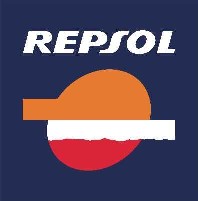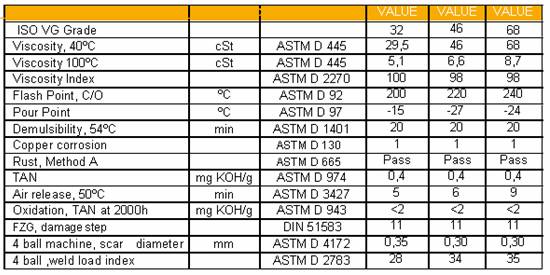| |
Repsol Hidroulico SC 32

Description and recommendations
An oil of maximum quality for hydraulic circuits. Paraffin based using ¡°ashless¡± technology: it incorporates special ashless additives for those hydraulic systems with valve actuators of very fine tolerance and where excellent filterability to the hydraulic fluid is demanded.
Qualities
Great resistance to ageing and sludge formation.
High viscosity index.
Excellent EP properties.
Great ease on separating water.
Great capacity for air elimination.
Magnificent filtrability.
Excellent anti-foam properties.
Good anti-rusting and anti-corrosive powers.
Compatible against seams and elastomers.
Quality Level
DIN 51524/2 ¨C HLP
AFNOR NFE 48603 ¨C HM
DENISON HF-0
CINCINNATI MILACRON P-68, P-69 and P-70
ISO 6743/4 - HM
Technical Data

Available in
ISO 32 Grade: Bulk.
ISO 46 and 68 Grade: Bulk, 875 Kg. Container and 185 Kg. Drums.
Hazard Identification
This product is not classified as toxic or hazardous under current legislation.
Handling
Certain minimum precautions to avoid prolonged contact with the skin should be taken when handling. The use of gloves, visors or masks is recommended in order to avoid splashes.
Health and safety hazards
Inhalation: Minimum risk of inhalation as it is a non-volatile product.
Ingestion: Does not provoke vomiting. Drink water. Seek medical assistance.
Contact with Skin: Wash with abundant water and soap.
Eyes: Wash with abundant water.
General measures: Seek medical assistance.
Fire fighting measure
No special measures are required.
Fire control: Foams, dry chemicals, CO2, water spray. Do not apply water jet directly as this may cause the product to spread.
Environmental precautions
Danger of physical contamination in the case of spillage (water flows, coastal areas, the ground, etc.) due to its floating capacity and oily consistency which may cause damage to fauna and flora with which it comes into contact. Avoid its penetration into water containers or outlets.
Decontamination and cleaning: Treat as an accidental oil spillage. Avoid spreading by using mechanical barriers and eliminate using both physical and chemical means.
Unless otherwise specified, the values cited in technical characteristics should be considered as typical. |
|

